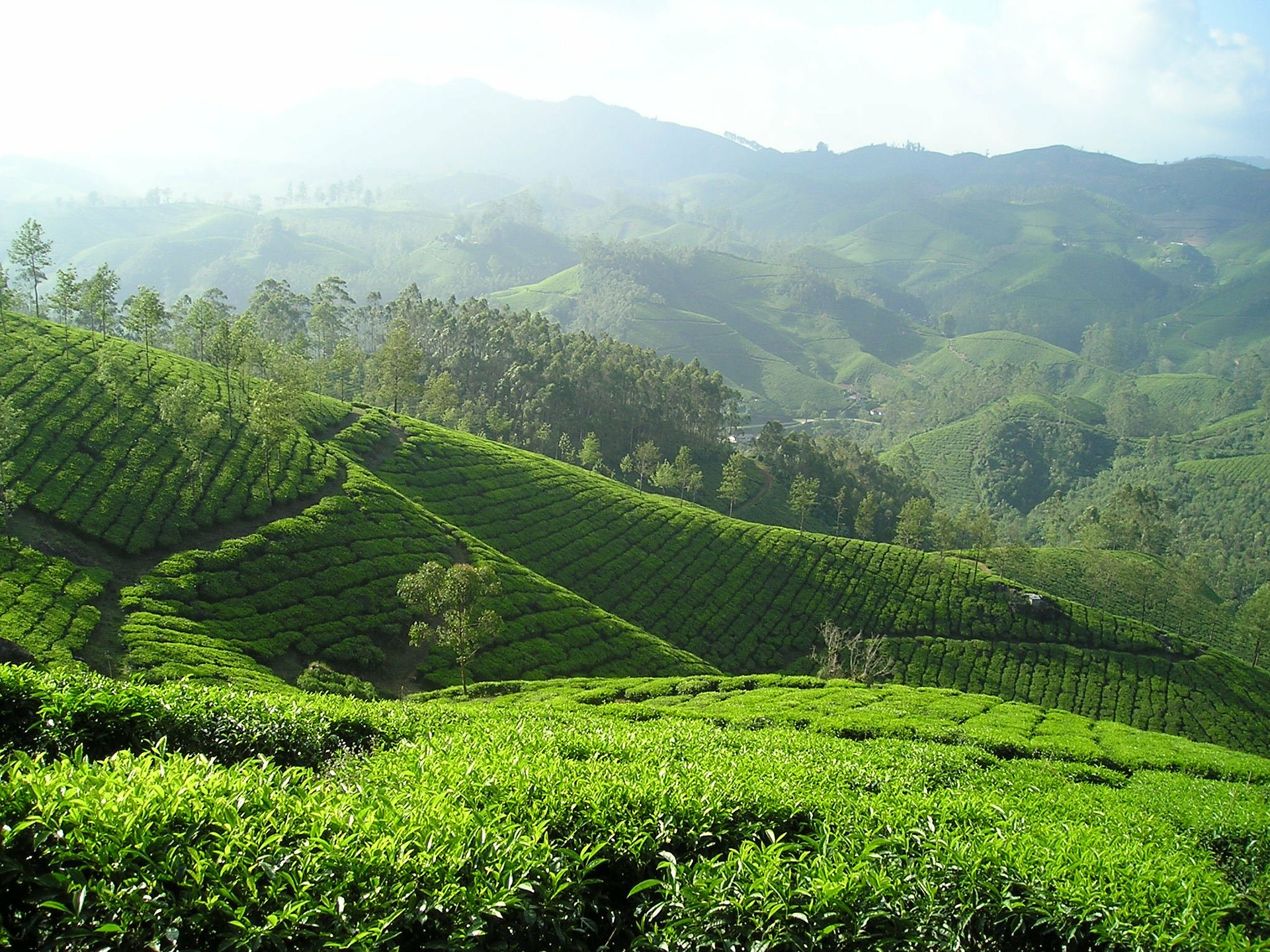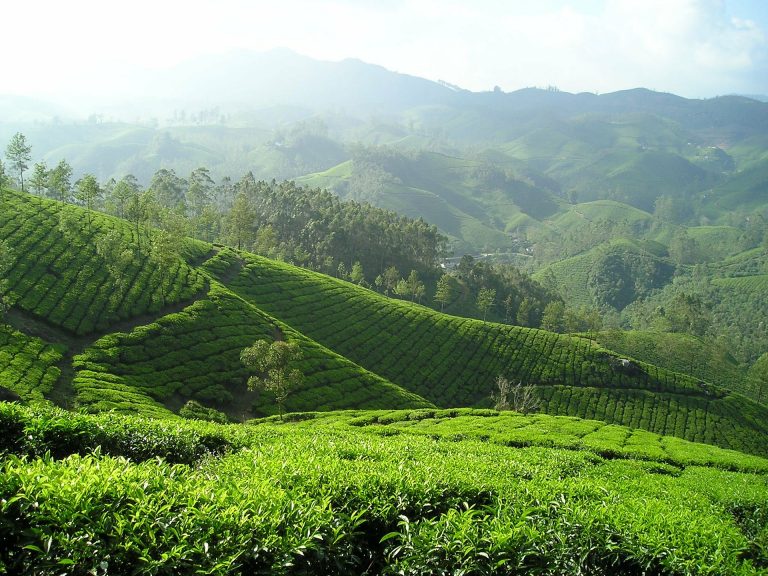Tea Cultivation
History of Tea Cultivation
There are eighty-two species of the tea plants belonging to the genus Cammellia that are widespread in South-east Asian countries. Among them, a species called Cammellia sinensis used as a beverage.
Tea was originated in the Chinese began drinking tea in the 6th century. During the 1000AD, tea consumption spread from China to Japan. Then the middle of the 17th century it was migrated to Europe, Portugal, Holland, and England. Around 1680 tea became the most popular beverage among the rich people in England.
In 1834, the British started cultivation tea in their respective colonies of India. The necessary knowledge and labor were obtained from China. But this attempt failed. Because china was afraid that China would lose its monopoly tea market in the world market.
In 1853, Robert Fortune, an English botanist learned all about tea cultivation from China by being four years in China securely. He later returned to India with several Chinese tea experts and 20000. After he was able to start cultivating tea there. The first tea seed batch that came to Sri Lanka was cultivated at the Peradeniya Botanical garden. It happened in December 1839.
James Taylor pioneers the launch first commercial tea plantation in Ceylon. It was started in 1867 on a 19-acre estate at Hewaheta Loolkandura estate. It was started as an alternative to coffee cultivation. At that time the coffee cultivation was being destroyed due to the Coffee Rust Disease. Today, the name “Ceylon Tea” is at the top of the world tea industry. Sri Lanka is the 4th largest producer of tea in the world.
Planting Material for Tea Cultivation
Tea belongs to the family Teaseae. There are three main types of tea grown in 3 different geographical regions, Assam, China, and Indo-China. Although there are several methods of propagation of the tea, the main methods are seed propagation and propagation by cuttings (Vegetative propagation).
The successful cultivar has been propagated by vegetative propagation. The yield and productivity per hectare given by those cultivars are very high.
It is possible to increase the productivity by following these methods to select cultivars
- Selecting high-yielding cultivars
- Resistant to certain pests and diseases.
- Resistant to climatic limitations
Nursery Management
Nursery is the first step of the planting program of agriculture production. Tea nursery management is one of the very important operation in tea cultivation because this is the initial stage of establishing quality and vigorous tea plant. It has several objectives.
- Obtain healthy, vigorous, uniform plants.
- Minimize causalities
- Properly trained in a short period of time
You can get more information about tea nursery management
Propagation
It is more advantageous to do vegetative propagation. Propagation promotes increase yield, uniformity and predictability of tea cultivation. Propagation with single node cutting is most effective in a commercial tea nursery.
Time of Propagation
It depends on the time of planting in the field. Required plant size, climate condition, state of cuttings taken. Not propagated in very wet and cold seasons. Because then rooting is delayed.
Cuttings are placed in soil-filled polythene bags. Before that soil should be lightly wetted and gently pressed. Only one cutting is planting in each bag. Those bags are covered with 300gauge transparent polythene to prevent the scorching of plants by sunlight.
Aftercare Practices of Tea Nurser
Shading and Watering
Shading is important to prevent mechanical damages by sun scorch and wind and to reduce transpiration. Broken ferns used to provide shade. But be sure not to increase the shade. If that happens the cuttings will boil.
Planting
Tea plants are planted in the field in single row planting system or hedgerow planting system. When planting in single row system, the spacing between rows is 4ft and spacing between plants is 2ft. Then it is possible to plant about 13600 plants per one-hectare land. When planting in hedgerow system, plant 150cm60cm60cm or 150cm45cm45cm. Usually, a pit for planting a tea plant is 45cm deep, 30ch in diameter at the top of the pit, and 22.5cm at the bottom
Preparation of Tea Plant as a Bush
Following steps are used to convert tea plant into a bush
- Centering (Cut-across)
- Bending and Pegging
About 12 months after planting, it is important to do centering to ensure that the lateral branches grow well and the root system spreads well. Here the main branch is cut 20-25cm from the ground level. 4-6 months later, the second incision is made at a height of 35-40cm above the ground level. 24 months after filed planting, light plucking is practice.
Shade Management of Tea Cultivation
Tea is a shade-loving plant. Therefore it is important to cultivate shade trees along with tea cultivation. If there were no shade trees, the tea cultivation would burn in the sun. Shade trees come in 2 varieties, medium and high shade. Suitable shade tree varieties are select according to the elevation and growth pattern of the plant.
Medium Shade Trees
- Calliandra calothryscis
- Erythrina lithosperma
- Gliricidia sepium
High Shade Trees
- Grevillea robusta
- Albizzia moluccana
Harvesting of Tea
The tender tea shoot is harvested as the final harvest of the tea plant. An interval of harvesting time is determined by the growth rate of the plant. This method of harvesting tea shoots is called “Plucking”. When plucking tea leaves, care must be taken with the plucking method, standard, severity, and frequency. Proper plucking is required to reduce the production costs, increase the quality of made tea and maintain the sustainability of tea bushes. Plucking is high labor-intensive practice. About 10-12 workers are needed to plucking 1 ha land area.
There are 4 plucking policies
- Plucking method
- Plucking standard
- Plucking severity
- Plucking frequency
These policies are varying from field to field and depending on the age, cultivar, and estate to another and depending on the region. In manual harvesting and selective harvesting methods, shoots having 2-3 leaves are removed. Young shoots, called Arimbu are left unplucked to pluck as heavier shoot in the next plucking round. In non-selective harvesting, most premature shoots and more mature leaves are left from the mother bush. Then regeneration will be getting late.
High quality tea produce by harvesting 2 or 3 apical leaves with a bud without any physical damage. Also, 1 leaf with dormant immature shoots harvest and used to made tea. By harvesting more than 75% leaves, the final product can be obtained in a higher quality.
Plucking frequency is the number of days between two plucking rounds. It is determined by observing the field. However, this did not take more than 8 days. This period is shorter during the rainy season and longer during the dry season.
Pruning of Tea
Usually, tea plant can grow up to 10m height under natural conditions. But, in maintaining commercial tea cultivation, the tea plant needs to be shaped like a bush. The removal of leaf bearing branches to maintain the tea plant at such a height is known as “pruning”. It stimulates the vegetative growth of tea and maintains a healthy tea bush.
Major objectives of pruning
- Maintenance of convenient height that will facilitate easy handling
- Stimulate vegetative growth of the bush
- Maintenance of a healthy frame
- Utilize the effective hectares of the estate and stabilization crops
Styles of Pruning
There are 4 major pruning styles that are practice in tea cultivation. Those are skiff, Cut-across, Lung prune, and clean prune. Skiffing is a slashing or leveling operation which reduces the plucking table by a few centimeters. Cut-across style is usually done at a 60cm – 70cm height from ground level. In lung prune style, a certain amount of foliage of about 200 to 250 leaves is retained on unpruned branches left on the periphery of the bush. It is generally done at a height of not less than 45cm. In the clean pruning method, all main branches are cut to a height of 25-40cm with the removal of all leaves.
Pruning Techniques
A sharp knife is need to cut the branches, because the cut should be very smooth and at an angle of 450. Pruning must be done only after a few showers of rain. Pruning is not practice in the dry weather as this exposes the bark of the frame leading to sun-scorch and eventual wood-rot. With repeated cycles of pruning in dry weather, the scorched and wood-rotted areas progressively increase and result in unproductive branches.
Chemical Fertilizer Application in Tea Cultivation
In nursery stage manuring is commence only after the cuttings have rooted. It should be rich in Sulphate of Ammonia, Ammonium Phosphate, Potasium Sulphate and Epsom Salt.
Zinc Sulphate application is very important to induce early bud breaking in nursery plants and is applied at the time of rooting of cuttings.
Dolomite is applied for tea lands when after uprooting tea and leveling the land with the rate of 1250kg/ha and the amount of application is dependent on the ph value of the soil. Dolomite application serves to control increasing soil acidity and at the same time provides two essential nutrients, ie. Mg and Ca.
Pest and Disease Management in Tea Cultivation
Insects and mite pests
80 species of insects and mites are dependent on tea plant. Most of this species are widely distributed in tea and are so low in number that they are regarded as non pests.
- Occasional pests (occasional but economically damaging)
e.g. white grubs in tea new clearings, Red-borer of young tea, Scale insects in young tea, Lygus bug at high elevations, Aphids and Tea tortrix in tea in recovery.
- Seasonal Pests (Seasonal outbreaks under certain agro-climatic conditions)
e.g. Tea Tortrix, Nettle grubs and Mites
Potential Pests (Some non pest under natural balance can be promoted to pest status by human activities
e.g. Tea Looper, Twig Caterpillar
- Secondary Pest (Commonly encountered in tea but not damaging the tea, until unusual conditions are created)
e.g. Mealy Bugs under water logging conditions in the nursery, Scavenging termites on buses which have accumulated decayed wood.
- Minor Pest (Feeding on tea but no warranting control)
e.g. Thrips, Tea Mosquito Bug, Tea Leaf Minor
Pest Control Methods
There are main 5 methods of control pests. First, one is to manipulate cultural practices to avoid the high impact of pests and the use of pest-resistant clones. Manual collection and destruction are practice mechanically. Pest can be controlled by the use of predators, parasites, and pathogens by augmentation, introduction, or using microbial pesticides. Contact, stomach, and systemic insecticides, insect growth regulators, chemosterilants, and pheromones for trapping are used chemically. Integrated Pest Management (IPM) is another successful method that combining of different methods of control for best results at the lowest cost.
Nematode Pests
Plant parasitic nematodes that are pathogenic in tea cultivation include:
- The Root Lesion Nematode (Pratylenchus loosi)
- The Burrowing Nematode ( Radopholus simillis)
- The Reniform Nematode (Rotylenchulus reniformis)
- The Root-Knot Nematode (Meloidogyne brevicauda)
These microscopic and cryptic pests attack only the root system. The damaged roots cannot absorb water and nutrients efficiently and this leads to severe nutrient imbalance and the plant loses its vigor.
There are several methods of controlling nematodes. Soil fumigation, irrigate the plants with uninfested water, nursery soil is not stored near the nursery, cutting deep drainage lines, avoiding nematode susceptible crops within nursery premises.
Common Disease in Tea Cultivation
- Blister Blight by Exobasidium vexans
- Black Blight Disease by Rhyzoctonia solani
- Cercosporella Disease by Calonectria theae
- Brown Blight by Colletotrichum cammelliae
- Grey Blight by Pestalotia theae
- Stem and Branch Canker by Macropoma theicola
- Collar and Branch Canker by Phomopsis theae
- Wood Rot
- Thorny Stem Blight by Aglaospora aculeate
- Red Rust by Cephaleuros parasiticus
- Oilspot Disease
- Red Root Disease by Poria hypolateritia
- Black Root Disease by Rosellinia arcuata
- Charchol Root Disease by Ustulina deusta
- Brown Root Disease by Fomes noxius


